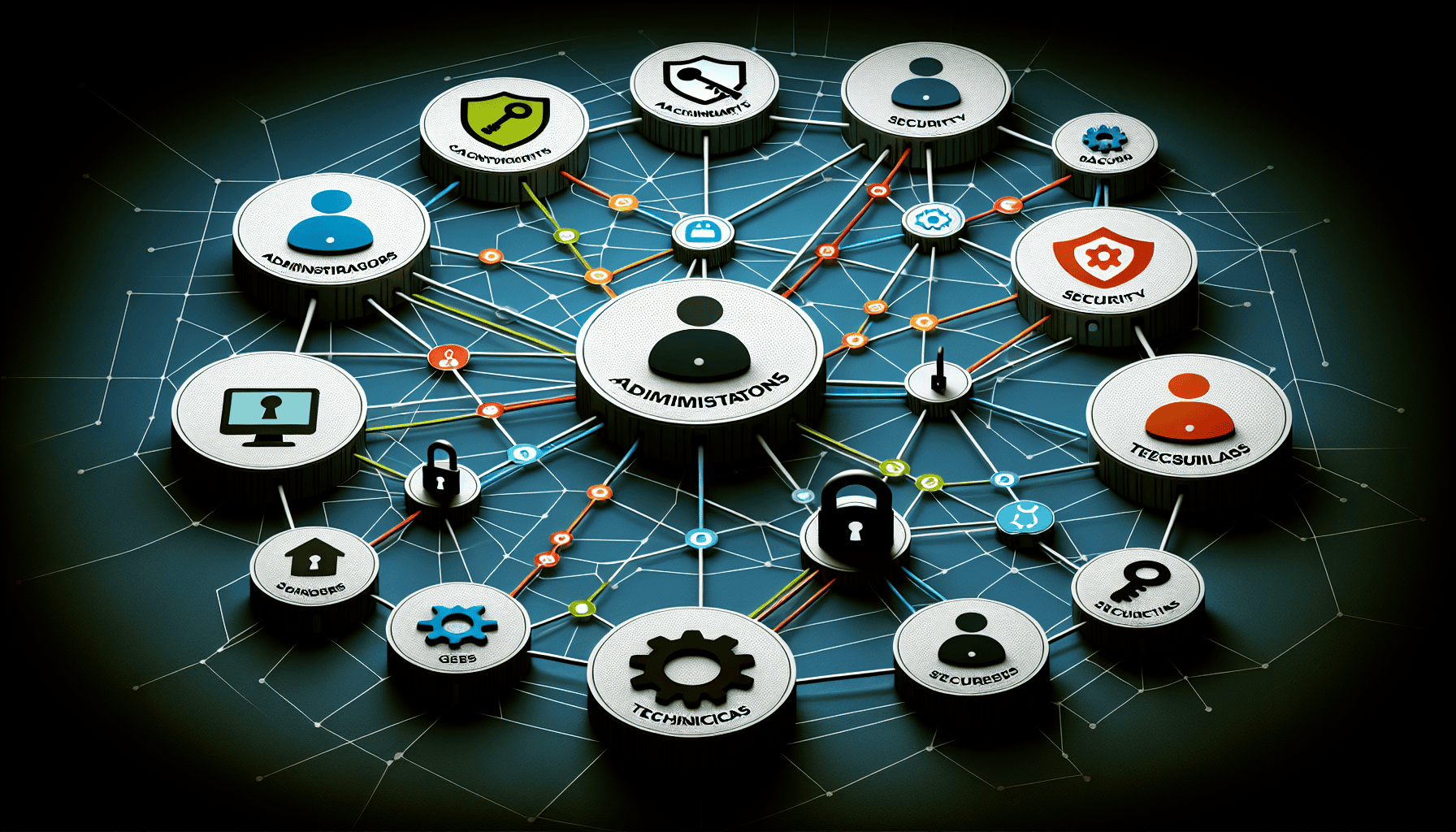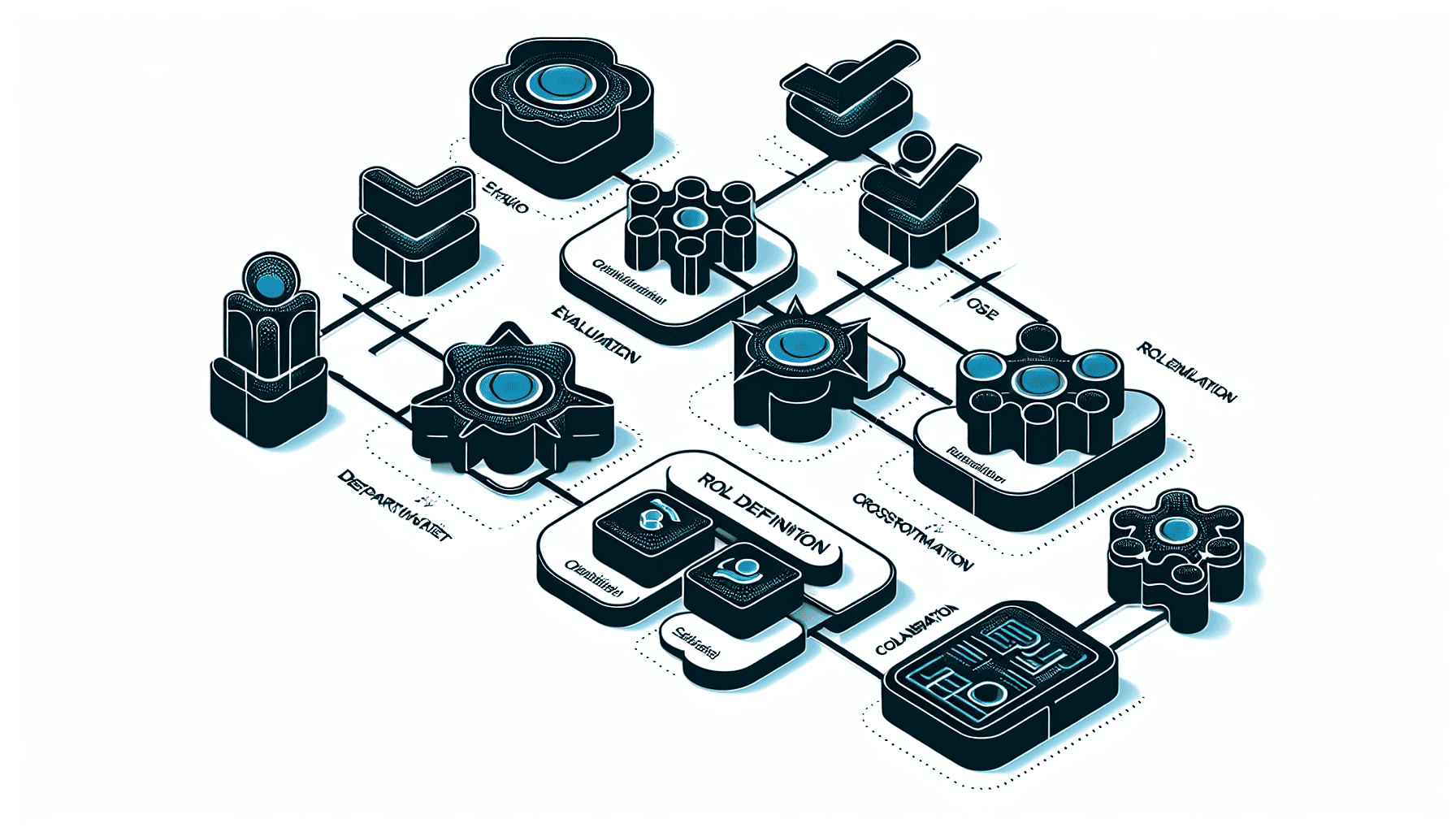What is RBAC and how can it secure your organization’s data? Role-Based Access Control (RBAC) is a straightforward approach to managing access across your enterprise, ensuring individuals have only the necessary rights to perform their roles effectively. Our comprehensive guide will break down RBAC’s foundations, illustrate its critical role in meeting security and compliance demands, and provide actionable insights for deploying this powerful tool in your organization.
Key Takeaways
RBAC is an access control model that grants permissions based on user roles within an organization, improving security while reducing administrative effort compared to other models like ACLs.
Implementing RBAC requires assessing current roles and permissions, developing an RBAC strategy, defining role-based permissions, managing role assignments, and ensuring cross-departmental collaboration for smooth execution.
RBAC contributes to regulatory compliance by creating a documented access control environment that helps organizations manage, audit, and report user access in compliance with laws, especially in sensitive sectors like healthcare and finance.
Decoding Role-Based Access Control (RBAC)

Role-Based Access Control (RBAC) is a sound model that limits network access depending on individual user roles within an enterprise. Its primary function is to guarantee that users only access information vital to their job responsibilities. This ingenious approach to restricting network access based control relies on three primary pillars: authorizations, roles, and privileges. In RBAC, roles are semantic constructs used to organize privileges and are aligned with employees’ positions to manage access effectively.
RBAC stands out from other control methods like Access Control Lists (ACLs), as it provides superior security with reduced administrative effort, thus elevating its effectiveness in access management and access control.
Consider an orchestra: each musician plays a particular instrument. In this analogy, RBAC is the conductor, confirming that everyone has the appropriate sheet music (access permissions) to perform their part, maintaining the ensemble’s harmony.
The Anatomy of RBAC Roles

In the RBAC orchestra, roles are the sheet music, a collection of user permissions that simplify the management of user privileges. RBAC access permissions are determined by factors like authority, responsibility, and job competency. These elements help regulate user access to different resources within the organization. For instance, roles in an HR application can range from HR managers with permissions to update details to regular employees who can only view their own information.
One of the key strengths of RBAC is its adaptability. For example, a ‘Marketing Publisher’ role in an API scenario may include permissions like ‘distribute:newsletters’ and ‘publish:events’, tailored to specific job functions. Moreover, if a user is assigned multiple roles, they receive the union of permissions from all their roles due to its additive model. It’s like being a musician who can play multiple instruments, each with its unique sheet music, contributing to the symphony of an organization’s operations.
Implementing RBAC: A Step-by-Step Approach

Setting up RBAC involves the following steps:
Evaluate current systems, processes, and workforce roles to identify access control gaps.
Develop an RBAC strategy that addresses these gaps and ensures security and compliance.
Define roles based on job functions and responsibilities.
Structure permissions for each role, specifying what actions and data they can access.
Manage role assignments and adjustments, ensuring that employees have the appropriate access rights.
Collaborate with different departments to ensure a smooth implementation of RBAC.
This process requires meticulous planning and cross-departmental collaboration, much like orchestrating a symphony.
Defining User Roles
The initial phase of the RBAC implementation process is to define user roles. Roles should be based on job competency, authority, and responsibility, aligning closely with an employee’s position within the organization. They are like the key signatures in a piece of music, setting the stage for the melody and the harmony that follows.
The process of role definition should include clear scopes and undergo periodic reviews for accuracy and necessary adjustments, ensuring operational efficiency and adherence to compliance standards. Role analysis can be performed through a top-down or bottom-up approach, based on discussions with business managers or assessing actual access rights in use, identifying conflicts with business policies. It’s like fine-tuning an instrument, ensuring that it plays the right notes at the right time.
Structuring Permissions
After roles are established, the next step is to organize permissions. Just like not every musician in an orchestra needs to play every instrument, not every employee needs access to all information. The principle of least privilege is a cornerstone in RBAC, prescribing that users receive only the necessary access to perform their job functions.
Permissions in RBAC are structured around defined roles, with management role scope limiting the manageable objects and role assignments specifying the permissible actions within the network. This can be as granular as enforcing access controls with table level granularity to ensure users access only the data necessary for their role, safeguarding against unauthorized SQL queries in production environments.
Role Assignments and Adjustments
Having established roles and permissions, the subsequent step involves assigning user permissions through role assignment, which equates to giving the right ‘sheet music’ to the appropriate ‘musicians’. Roles in RBAC systems can be defined once and then applied to multiple users; they can also be removed or reassigned as individuals’ job functions change.
However, like any good composition, RBAC is not static. Efficient management of role assignments can be achieved through the use of role groups and role assignment policies, allowing for streamlined addition or removal of access rights. Ongoing role review and adaptation are critical to maintain role relevance and to ascertain that users have the appropriate access levels as the organization evolves. It’s like fine-tuning an orchestra, ensuring the harmony remains even as the music changes.
RBAC’s Impact on Regulatory Compliance

Just as a symphony must adhere to certain musical rules and standards, organizations must comply with regulatory and statutory requirements. RBAC significantly aids organizations in efficiently fulfilling these requirements, particularly in sectors handling sensitive data like healthcare and finance.
RBAC helps certify regulatory compliance by creating a well-documented access control environment that aligns with privacy, security, and confidentiality standards required by law. Implementing RBAC enables organizations to better manage and audit network access, which is a key aspect of complying with federal, state, and local regulations.
Moreover, RBAC’s audit capabilities allow for tracking of who accessed a system, what changes were made, and what permissions were in effect, aiding in the correction of issues and regulatory reporting. It’s like having a record of every note played in a musical performance, ensuring that the symphony stays in harmony with the composer’s vision.
Advanced Concepts in RBAC

Just as there are advanced techniques in music, there are advanced concepts within RBAC that enhance its functionality and security. These include hierarchical roles, separation of duties, and dynamic role management.
Hierarchical Roles and Inheritance
Hierarchical roles in RBAC are like the tiers of an orchestra, reflecting the organization’s structure. Senior roles are structured to encompass the permissions of their junior counterparts, supporting a clear delineation of access through the organization.
Roles within a hierarchical RBAC system have a parent-child relationship. Higher-level roles inherit permissions from lower-level roles, streamlining the process of permission management. It’s like a musical piece where the main theme is echoed with variations throughout the different sections, creating a unified composition.
Separation of Duties in RBAC
Separation of duties within RBAC enhances security by ensuring no single employee has complete control over a critical process. This is vital for regulatory compliance and is akin to an orchestra where no single musician plays the entire piece.
Implementing separation of duties in RBAC involves the creation of roles with mutually exclusive permissions, necessitating collaboration to complete sensitive tasks. It’s like a duet, where two musicians must work together to create a harmonious performance.
Dynamic Role Management
As an organization evolves, so too must its roles and permissions. Dynamic role management in RBAC systems enables organizations to adapt roles and permissions in line with evolving needs and changing job functions. To address real-time operational demands, dynamic role management relies on event handling and flexible role assignment policies, alongside the ability to quickly approve or adjust permission requests.
It’s like improvisation in music, adapting to the rhythm and mood of the moment while still maintaining the overall harmony.
RBAC in Action: Real-World Scenarios
While understanding the theory behind RBAC is important, seeing it in action can provide a clearer picture of its benefits. In the world of finance, RBAC is used to control access to sensitive financial data, ensuring compliance with privacy regulations, and adopting the principle of least privilege for security.
In healthcare, another industry dealing with sensitive data, RBAC is crucial for:
Managing access to patient data
Adapting to medical workflow dynamics
Enforcing least privilege
Upholding regulations like HIPAA, including emergency access protocols
It’s like a symphony performed in different venues, each with its unique acoustics and audience, but maintaining the same underlying harmony.
Alternative Access Control Models
Although RBAC provides a robust access control, it isn’t the sole model available. Other models like Attribute-Based Access Control (ABAC) and Mandatory Access Control (MAC) also provide access control solutions, each with their unique approaches and benefits.
Discretionary Access Control (DAC), for instance, allows resource owners to grant access by setting access policies directly, differentiating it from the structured role definitions in access based RBAC and the broader restrictions in coarse grained access control. It’s like a solo performance where the musician has more control over the interpretation of the piece.
On the other hand, MAC aligns rights with security clearance, as opposed to the role-centric approach of RBAC, providing a stricter access control for environments needing it. It’s like a symphony played note for note, with no room for improvisation. This concept was also discussed at the recent national computer security conference.
Optimizing Your Security Posture with RBAC
Setting up RBAC represents a significant stride in fortifying your organization and enhancing your security stance. RBAC enforces a least-privilege security model, ensuring users and applications are granted only necessary privileges as required. This minimizes unnecessary access and strengthens the organization’s security posture.
Regular audits are essential in RBAC systems to identify and correct privilege creep, securing potential breaches by progressively aligning permissions with actual role necessities. It’s like a conductor fine-tuning the orchestra, ensuring each musician plays their part perfectly and the symphony stays in harmony.
Technology and RBAC: Cloud and On-Premise Solutions
A significant advantage of RBAC is its adaptability for implementation in both cloud and on-premise environments, offering a range of solutions for organizations. Azure RBAC, for instance, provides fine-grained access control to different users, groups, and services by defining specific roles and assigning them appropriately.
Amazon Cognito also provides RBAC capabilities, granting temporary and limited-privilege access to AWS resources. These solutions, like different instruments in an orchestra, offer unique capabilities and advantages, but all work together to create a harmonious access control environment.
RBAC Tools and Software
RBAC software aids in designating permissions to authorized users, aligning with their organizational roles, and simplifies the management of user access rights. Tools like Auth0 and StrongDM support RBAC management by synchronizing user and group permissions, providing auditing, monitoring, and just-in-time access capabilities.
These tools are like the sheet music for the orchestra, guiding each musician in their performance. Dedicated troubleshooting tools are also available, ensuring that the symphony of access control plays smoothly and without interruption for third party users.
Summary
In the symphony of organizational operations, RBAC stands as an invaluable conductor, orchestrating a balanced harmony between security and functionality. It provides a robust access control model, aligning permissions with roles, and optimizing an organization’s security posture. With advanced concepts like hierarchical roles, separation of duties, and dynamic role management, RBAC adapts to the evolving rhythm of an organization, ensuring a performance that hits all the right notes.
Frequently Asked Questions
What are the three primary rules for RBAC?
The three primary rules for RBAC are: Role assignment, Role authorization, and Role access.
What is the difference between RBAC and ABAC?
The main difference between RBAC and ABAC lies in how they manage access. RBAC is based on predefined roles, whereas ABAC uses a combination of attributes to match users with the resources they require for a specific task.
What is the difference between SSO and RBAC?
The main difference between SSO and RBAC is that SSO allows users to access multiple apps with one login, while RBAC controls network access based on user roles within a company. RBAC assigns access based on user responsibilities.
What is an example of a user RBAC?
An example of a user RBAC is controlling access to RDS servers by restricting it to a specific group of accounts, like ‘Server Administrators’, to prevent unauthorized access in a simple manner.
What is an example of a role-based access control list?
An example of a role-based access control list is giving HR managers permission to update employee details in an HR application, while other employees can only view their own details, ensuring appropriate access based on roles. This can also include designating roles like administrator, specialist, or end-user to limit access to specific resources or tasks.
